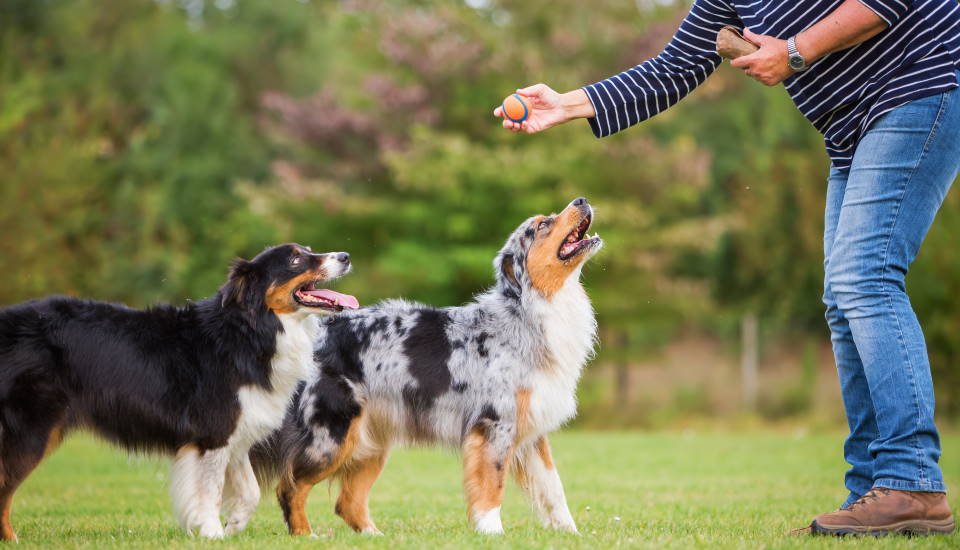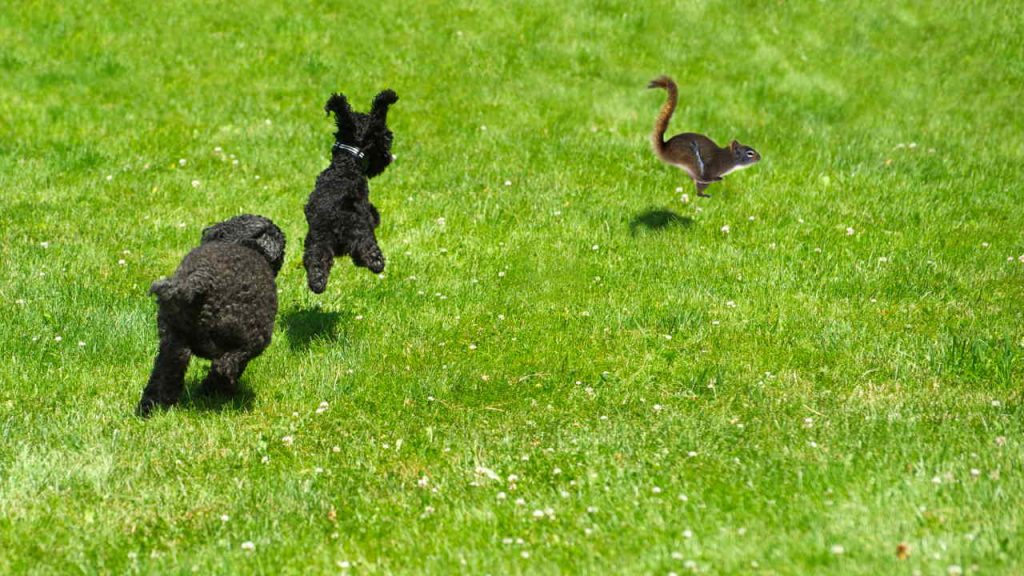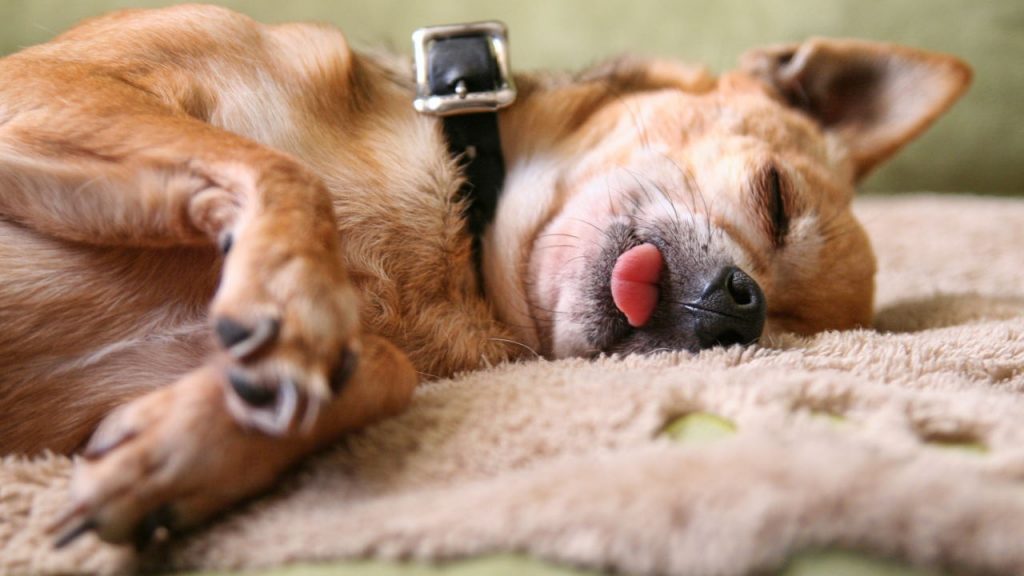Introduction
You and your dog go on a walk, and everything is peaceful and relaxing. A second person and their dog suddenly confront you. When the other dog approaches, your dog starts to bark and run at it. This is an unacceptable behavior since it might cause harm to a person or their pet. For this reason, the behavior should be avoided at all costs.
Look at it from another perspective. Instead of walking alone, you and your dog cross paths with another dog owner and their pet companion as your dog remain calm when they walk down the sidewalk on the other side. Isn’t this a more appealing scene than the first one?
The scenario you choose is entirely up to you. You may have the second scene if you are willing to put in the time and work. You can train your dog to perform this if it is old enough to grasp the basic commands.
Instead of teaching your dog a new skill, you teach him how to perform in certain scenarios. A command word may be necessary for the beginning, but the ultimate aim is for your dog to be able to ignore other dogs on its own.

For your dog’s safety, you need to teach him how to behave calmly when you are out walking him. Without this essential ability, your dog will be able to wander around on its own. Because of this, your dog should be taught to ignore other dogs as soon as possible. If you start training when your dog is still learning to walk on a leash, the training will be easier. However, an older dog may also be taught to behave on a walk; it will just take a little longer to do this. No matter how old your dog is, teaching him how to behave among other dogs may save him from suffering significant injuries or even getting into a fight.

The Supplies List
You will not need much training equipment to teach your dog to ignore other dogs. You will only need to make time for daily walks, ideally many times each day. The following is a complete list of equipment necessary for the course.
- Leash: For walking your pet on a leash.
- Treats: For rewarding your dog’s good behavior. Find out your dog’s favorite reward so you can get their attention immediately when you give them one. For instance, your dog may prefer a juicy piece of chicken or a dry crunchy goodie. Instead of bringing a treat for your dog, you may bring your dog’s favorite toy.
- Taking two or three 15-minute walks per day is ideal.
When training your dog, be patient and do not punish him if he fails. It is crucial to keep in mind that teaching your dog to ignore other dogs requires more work and patience than additional basic dog training. Also, it is important to note that the more forcefully you pull on the leash, the more your dog will strive to free itself from it. When you are calmer, your dog will be more relaxed, too.
To teach your dog to ignore other dogs, there are some simple training methods. The methods are listed below from the most effective to the least effective, respectively.
Methods

Your dog must teach some behaviors to help him avoid other dogs. Your dog will be able to walk peacefully on a leash and pay attention to you at the end of this training.
At first, you must separate yourself from other pets while doing this form of training. Make sure you can attract your dog’s attention when there are no distractions before adding additional dogs into the scenario. If you have access to a private yard or fenced area, begin your training there.
To get started, teach your dog to pay attention to you. Giving your dog an order to look at you is the most important part of this step. Once your dog has learned to pay attention to you, you may give them any extra command you choose. In the presence of other dogs, this skill is essential.
The Method of Reward and Attention

- Before going on a walk, call your dog by his name. If he continues to look at you, reward him with such a treat. You may also use this method to teach your dog instructions like “quiet,” “leave it,” or “watch me.”
- Keep repeating this procedure until you get his attention and look up to you when you say his name.
- Keep your dog away from other dogs when you begin walking them. The first time he sees them, draw his attention to you by saying his name. When he pays attention to you, reward him with a treat.
- In the same manner, get closer to other dogs. Reward good behavior; punish bad behavior by moving him farther away and starting again.
- As you and your dog become closer to other pets, you will not have to worry about your dog misbehaving.
Nudging Method
- The first step is to walk your dog around the neighborhood.
- Try to walk in a comfortable and tranquil when you walk with him. Your dog will follow your behavior and be calm if you are.
- If another dog approaches you, do not jerk on your dog’s leash. This will encourage your dog to pull harder.
- As an alternative, gently tap your dog on the side with your knee to redirect him. If he calms down, reward him with a little treat.
- If he continues to get excited about the other dog, you may need to give him a hard pull on the leash while calling out his name. If he changes his behavior, give him a treat.
- The new behavior you teach your dog may take a few weeks to perfect. Be patient; he will learn it. Then, continue to train in more busy areas.
The Method of Friends Gathering

- Gather a group of dog owners to help you teach your puppies.
- Start by keeping your dog on a leash and out of the company of other dogs.
- Each dog should stand with their owner a 20-foot-apart.
- Let the dogs and their owners walk past you one by one.
- Tell your dog “No!” and have him sit whenever he approaches the other dog.
- Reward him when he succeeds.
- Train your dog for at least 30 minutes each day with this circle of the conga line. In the end, you should be able to take him out for a stroll in public and expect him to behave in the same way after he has acquired this skill.
Your dog can walk peacefully on a loose leash now so that you may practice your training in more complex settings. This may be done by taking your dog on walks in different areas. For example, help your dog go for a walk with a wide range of possible distractions.
The following are some examples of practice locations:
- Dog parks or other parks where there are a lot of dogs. Your dog will learn to ignore other dogs much faster if you use the method mentioned above. This is because dogs are social creatures, and they communicate in a unique way that encourages them to interact with one another. However, if they can ignore other dogs even if there are several of them nearby, it means your dog’s training has been successful.
- Parks, where rabbits and squirrels live, are great places to go on daily walks. Small creatures like rabbits and squirrels often draw dogs’ attention, particularly those with a strong hunting instinct. Your dog will be far more likely to ignore other dogs if they can ignore these creatures.
- Routes that are in densely populated regions, such as cities. Cities are full of scents, noises, and movements that would distract dogs. If your dog can walk through a busy metropolis without becoming distracted, it will be able to ignore other dogs while they are out and about.
When Is It Okay for Your Dog to Socialize?

After some time, your dog should be able to understand to ignore other dogs when walking on a leash and play with other dogs while off-leash in a dog park. However, this is not the case all the time. Therefore, there should be a way to allow your dog to socialize with other dogs on a leash on certain occasions. For example, you can visit your friend and their dog in the park during a lovely weekend walk. You would like to chat with your friend while you want your dogs to be friends and socialize.
In this scenario, your dog will be on the leash, so they assume they should not interact with this dog, but the goal is that your dog should understand that he can interact with this dog when you permit them to socialize.
If you live in a small city where you know a lot of people, or you always take your walk in your neighborhood, you might want to train your dog for such scenarios. Please follow the steps below next time you find yourself in such a setting.
- If you want your dog to interact with a certain dog during your stroll, you should first stop walking.
- After this pause, do not give your dog an order to look at you.
- Let them approach, play and scent each other out.
- Call your dog’s name and continue walking when you decide that the interaction should end. Your dog should immediately stop playing with the dog and follow you.
- Do not forget to give him a treat if he succeeds in this training.
After a few trials, your dog will learn that this dog is okay for them to play with if you allow him.
Conclusion
Can you not walk more than a half-block without your dog making an aggressive move or barking at another dog in the street? Unfortunately, you are not alone in this battle. Dogs are naturally social creatures; as such, they become overly excited when they encounter another dog friend. You may, however, train your dog to concentrate on you instead of the other dog by teaching him a few basic commands.

When training obedience, it is essential to educate your dog to ignore distractions. Thanks to this tutorial on how to teach your dog to ignore other dogs, you will be able to go for a stroll with your dog without fear. After trying these methods, your dog will soon be able to ignore other dogs as it learns to pay attention to you and get used to being rewarded with treats. For stress-free walks, you should make an effort to educate your dog that seeing other dogs will result in a tasty reward.
Eventually, you may teach your dog to behave without incentives like treats and toys by progressively reducing the number of goodies you reward. With this in mind, you may begin with three or four treats per walk. After some time, you can gradually lower the treats to one or two. Once you observe that your dog has learned to behave nicely only with one treat, you can stop giving him treats or toys.
Your dog’s learning process is difficult and might lead him to confusion, so be patient with him during training. Do not punish your dog harshly when it makes mistakes. If you believe that you are praising your dog too much with treats and not challenging them enough during training, you are on the right track because dogs become more successful when they are confident, and your treats and repetition boost their confidence.




